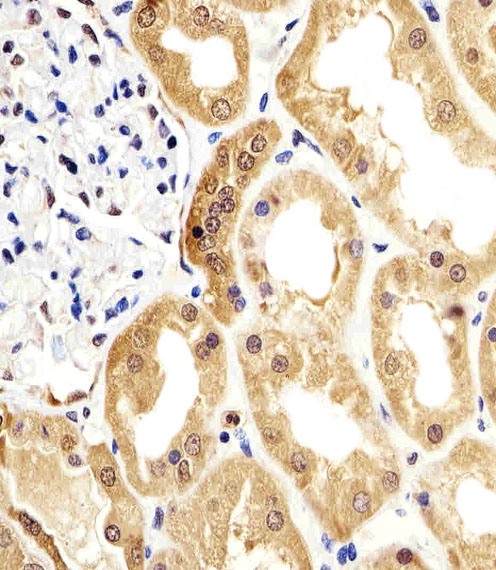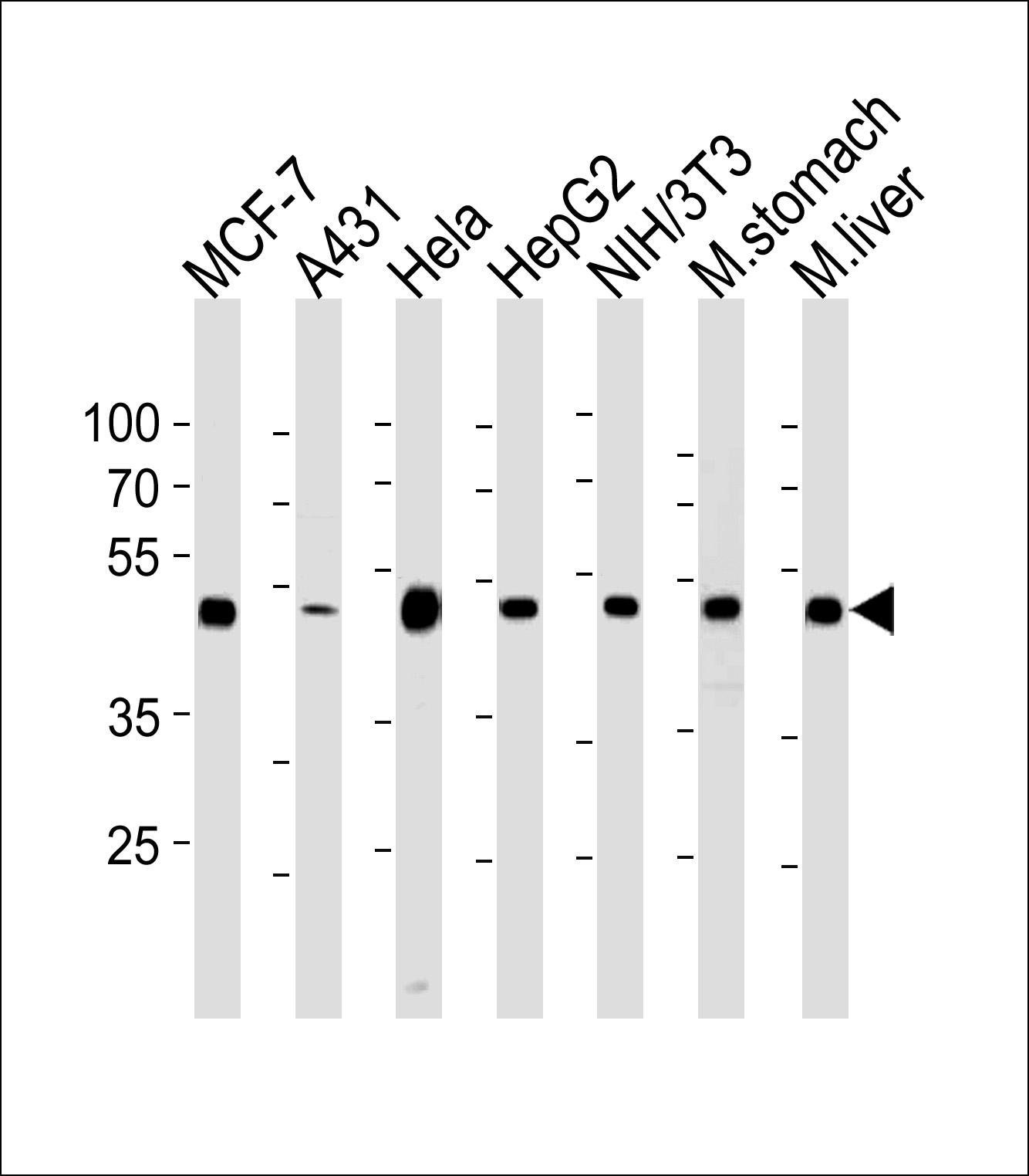产品名称
ENO1 (11L13) Mouse Monoclonal Antibody
别名
Alpha-enolase, 2-phospho-D-glycerate hydro-lyase, C-myc promoter-binding protein, Enolase 1, MBP-1, MPB-1, Non-neural enolase, NNE, Phosphopyruvate hydratase, Plasminogen-binding protein, ENO1, ENO1L1, MBPB1, MPB1
存储缓冲液
Purified monoclonal antibody supplied in PBS with 0.09% (W/V) New type preservative N. This antibody is purified through a protein G column, followed by dialysis against PBS.
Human Gene ID
NP_001188412.1;NP_001419.1
Human Swissprot No.
P06733
特异性
Purified His-tagged ENO1 protein was used to produced this monoclonal antibody.
稀释度
IHC-P~~1:100~500;WB~~1:1000
运输及保存条件
Maintain refrigerated at 2-8°C for up to 2 weeks. For long term storage store at -20°C in small aliquots to prevent freeze-thaw cycles.
背景介绍
Multifunctional enzyme that, as well as its role in glycolysis, plays a part in various processes such as growth control, hypoxia tolerance and allergic responses. May also function in the intravascular and pericellular fibrinolytic system due to its ability to serve as a receptor and activator of plasminogen on the cell surface of several cell-types such as leukocytes and neurons. Stimulates immunoglobulin production.
MBP1 binds to the myc promoter and acts as a transcriptional repressor. May be a tumor suppressor.
组织表达
The alpha/alpha homodimer is expressed in embryo and in most adult tissues. The alpha/beta heterodimer and the beta/beta homodimer are found in striated muscle, and the alpha/gamma heterodimer and the gamma/gamma homodimer in neurons
细胞定位
Cytoplasm. Cell membrane. Cytoplasm, myofibril, sarcomere, M line. Note=Can translocate to the plasma membrane in either the homodimeric (alpha/alpha) or heterodimeric (alpha/gamma) form. ENO1 is localized to the M line
功能
Glycolytic enzyme the catalyzes the conversion of 2- phosphoglycerate to phosphoenolpyruvate (PubMed:
29775581, PubMed:
1369209). In addition to glycolysis, involved in various processes such as growth control, hypoxia tolerance and allergic responses (PubMed:
2005901, PubMed:
10802057, PubMed:
12666133, PubMed:
29775581). May also function in the intravascular and pericellular fibrinolytic system due to its ability to serve as a receptor and activator of plasminogen on the cell surface of several cell-types such as leukocytes and neurons (PubMed:
12666133). Stimulates immunoglobulin production (PubMed:
1369209).


